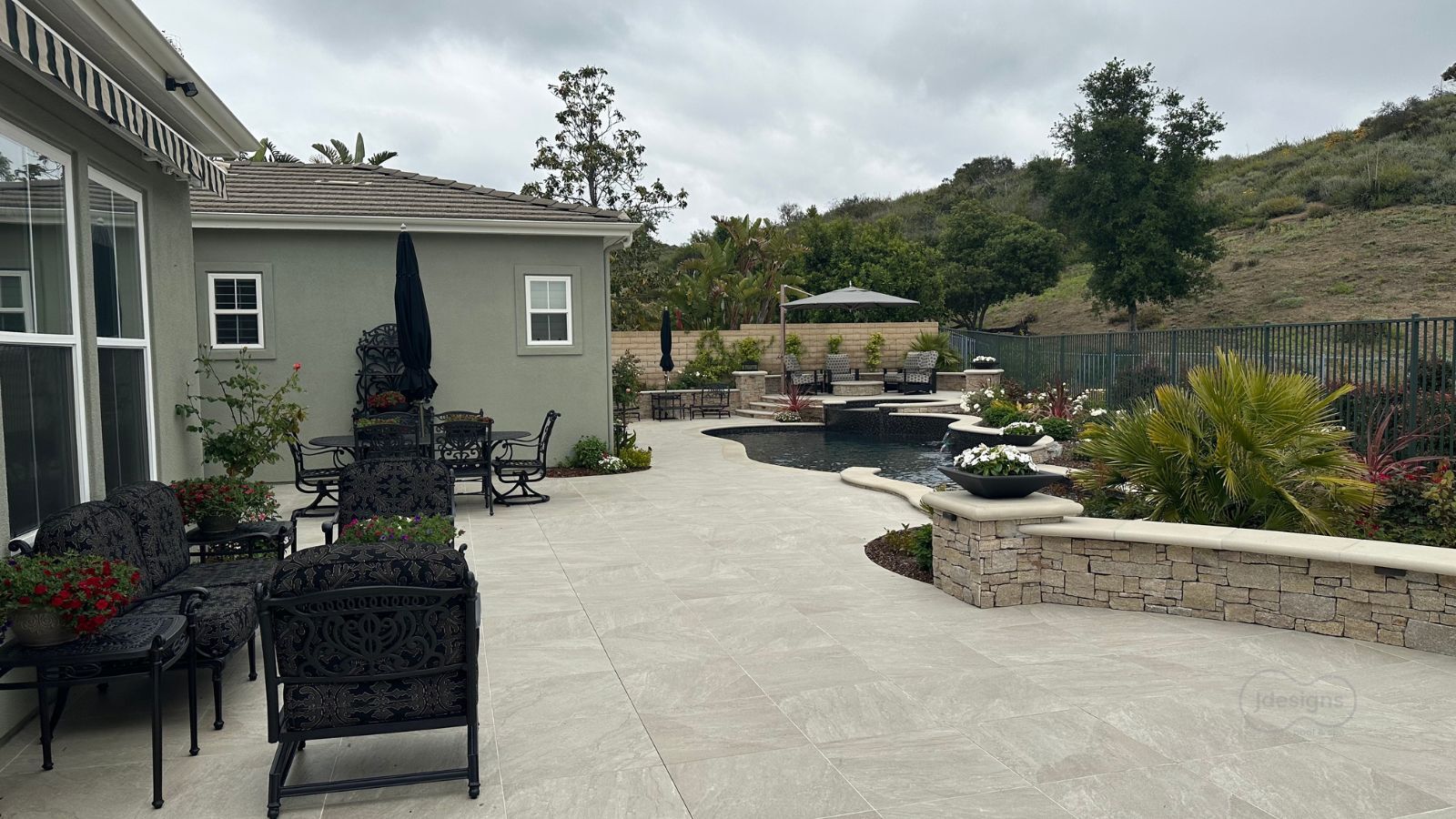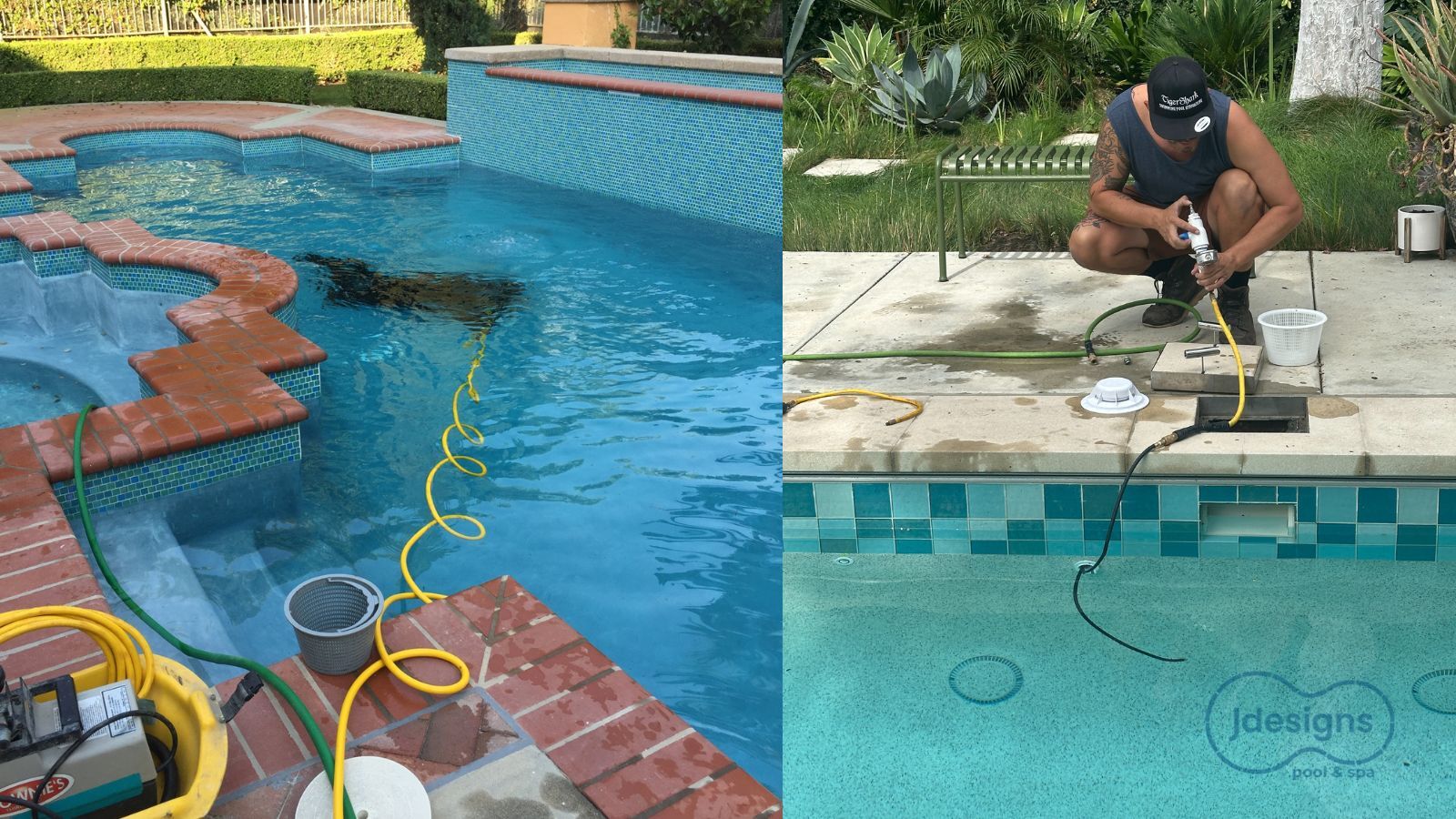Large Format Pool Tile: Pros, Cons, Installation Tips & What to Know Before You Buy
Is Large Format Tile Right for Your Pool Project? What Every Homeowner Should Know Thinking about building or transforming your pool with...
4 min read
JC Escudero : Nov 18, 2025

Thinking about building or transforming your pool with large-format tile? You’re not alone; many homeowners are inspired by striking, contemporary designs that put seamless surfaces and modern lines front and center. But before you fall in love with the look, it’s essential to understand the practical aspects: performance, safety, costs, installation challenges, and how to protect your investment for years to come.
At J Designs Pool & Spa, our mission is to educate clients so you make informed choices that add value to your lifestyle and your home. Below, we break down the facts, debunk myths, and share critical tips to ensure your new pool surface is both stunning and built to last.
Large-format pool tiles are typically defined as tiles with one side measuring at least 15 inches, though certain industry standards set the threshold at 23 inches or more. These tiles are most commonly manufactured from engineered porcelain, providing exceptional water resistance, high durability, and greater reliability than natural stone in submerged environments. It’s important to note that waterline tiles are generally not included in the large-format category. Due to the pool's shape and dimensional variations, especially with freeform designs, installing large-format tiles at the waterline results in numerous irregular cuts, often leading to asymmetrical layouts and a less desirable aesthetic.
Why the popularity? Large tiles give that coveted clean, modern look, fewer grout lines mean less visual clutter and easier cleaning. They can mimic wood, stone, or concrete, adding elegance to any pool or spa.

Advantages:
Potential Drawbacks:
Pro Tip: Avoid a 50% offset (“brick pattern”) with large tiles. Use a 1/3 offset instead to minimize uneven surfaces.

It’s a common misconception that choosing an affordable large-format tile means your pool surface will be inexpensive overall. In reality, while the cost of the tile itself can be surprisingly reasonable, the work and materials required to ensure a flawless, long-lasting installation represent a significant, and necessary, investment.
Here’s why:
Because of these demands, the true cost of a professional large-format pool tile install reflects the investment in certified labor, advanced prep, and only the very best materials available. While this may increase upfront costs, it protects you from costly repairs or even complete resurfacing later, and ensures your pool remains both beautiful and safe for years to come.
Tip: When comparing bids or service packages, always ask for a detailed breakdown of materials and prep work included. The lowest price rarely provides the level of care, premium materials, or installation standards required for a project that will truly stand the test of time.
|
Feature |
Large Format Tile |
Standard Interior Tile |
|---|---|---|
| Waterproofing | Impervious, rated porcelain |
Often porous, not waterproof |
| UV/Chemical Resistance | Engineered for outdoor, pool |
Typically indoor only |
| Slip Resistance | Matte/textured finishes |
Often glossy/slippery |
| Thermal Durability | Withstands heat/cold cycles |
Prone to warping/cracking |
| Pool Certification | Designed for submerged use |
Not rated for pool use |
Bottom line: Pool tile is built to withstand chemicals, heatwaves, freezing temps, and constant exposure to water, a level of performance not found in regular interior tiles, or even in some outdoor tiles.
When choosing any pool tile finish, insist on:

The #1 cause of premature tile failure? Poor installation. Large-format tiles require perfectly flat surfaces and specialized adhesives; any shortcuts risk cracking and water intrusion. Only hire contractors who can detail the exact industry standards they follow (TCNA/ANSI guidelines), use premium pool-grade epoxy thinset, and allow for full adhesive curing time.
Spot bonding (“dabs” of adhesive) is never acceptable. Full coverage prevents air gaps and future water damage.
Trust contractors who commit to the latest Tile Council of North America (TCNA) and American National Standards Institute (ANSI) protocols. These govern everything from tile durability requirements to proper setting materials and joint spacing.
Ask your provider which TCNA and ANSI methods they’ll follow, and expect clear written contracts; it’s your best assurance of safe, reliable pool performance.

Can large-format tile go on a pool floor?
Absolutely, with the right prep and products. You’ll enjoy a seamless, elegant poolscape.
Should I use marble or natural stone?
We advise against it. Natural stone can absorb water, stain, and crack, choose pool-rated porcelain or glass instead.
How much grout for 12x24 tiles?
Usually 1/8"–3/16", or as small as 1/16" if the tile is rectified.
Can pool tile be used indoors?
Yes! It’s more than tough enough for kitchens, baths, or other splash-prone areas.

If you’re drawn to contemporary, lasting beauty, large-format tile is a sound investment when installed and maintained professionally. The best results, warranties, and long-term enjoyment always come from working with specialists who leverage advanced products, follow evolving industry standards, and provide clear written contracts for every stage of the process.
At J Designs Pool & Spa, we put client protection, safety, and education first. From material selection to installation to hands-off, comprehensive maintenance, our team ensures your pool receives the care and the stunning look it deserves.
Ready to explore your options or request a design consult? Get in touch today for peace of mind and a pool that stands the test of time.

Is Large Format Tile Right for Your Pool Project? What Every Homeowner Should Know Thinking about building or transforming your pool with...

You just invested in a brand new pool. What’s next? Thinking you can handle pool care with a few YouTube videos and a set of chemicals?

If your pool’s water level is mysteriously dropping, you might chalk it up to evaporation, but it could be something more serious. Undetected leaks...